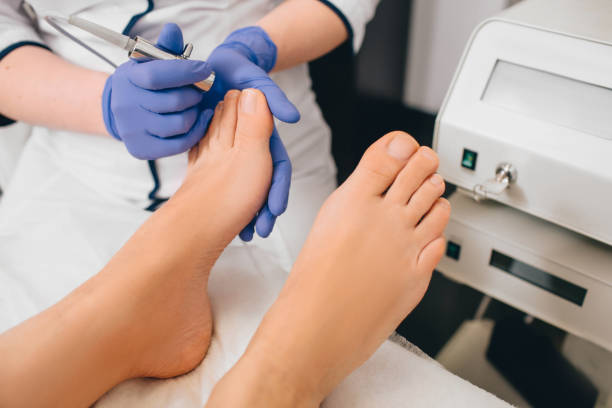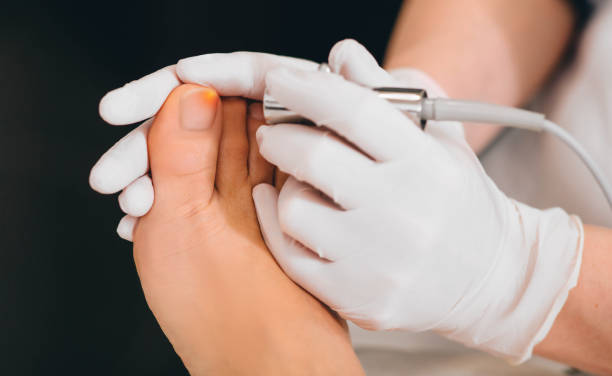Combining Cold Laser Therapy with Other Treatments for Maximum Efficacy
Cold laser therapy, also known as low-level laser or photobiomodulation, is a safe and noninvasive treatment for pain relief. This FDA-approved technology delivers healing light to your body on a cellular level.
It works by beaming energy pulses at different light wavelengths into the painful area of your knee. This triggers chemical changes to damaged tissue. You’ll need a series of sessions to see the best results.

1. Physical Therapy
Cold laser therapy Adelaide is a noninvasive and painless treatment that increases the body’s natural healing response. Its red light activates the tissue and triggers a chemical reaction without heating the area. It has been demonstrated to reduce inflammation and stimulates cell regeneration in soft tissues and joints to relieve pain and accelerate the healing process.
The treatment involves a device the size of a flashlight that is placed directly over the affected area for 30 seconds to several minutes. The light is absorbed by the damaged tissues and triggers a chemical reaction that stimulates the cells to heal faster. It can also help increase blood flow to the injured area to decrease pain, swelling and spasms.
While many doctors were skeptical of this therapy in the past, it is now widely accepted as a viable treatment option for musculoskeletal injuries and conditions. It can be used as part of a comprehensive rehabilitation treatment program to speed recovery and return patients back to their daily lives.
LLLT is safe when performed under the care of Adelaide Fungal Nail Clinic. It is not recommended for cancerous lesions or carcinomas, and it shouldn’t be used over the thyroid or eyes. It has not been tested for the effects on unborn children, so women should avoid this type of treatment during pregnancy.
2. Massage
Probably the best known of all spa treatments, massage is the stroking, kneading, warming and pressing of the skin and muscles. It is widely used to relax, revive and heal the body, as well as being a great stress reducer. Theraputic massage improves muscle blood flow and circulation, encourages the exchange of substances between cells, reduces cell adhesion and stiffness and increases flexibility.
A good massage can also help regulate your hormones, which is particularly important if you are struggling with menopause symptoms or chronic sleep problems. A study in The Journal of Clinical Psychiatry suggests that the stress hormone cortisol may be reduced and the neurotransmitters serotonin and dopamine increased by getting regular therapeutic massages.
Another benefit is that massage stimulates the lymphatic system, which maintains bodily fluids and removes waste and toxins, so it is helpful for those with mastectomies or other breast surgeries. Massage can also help with issues such as asthma, arthritis and constipation and is being increasingly used by people with dementia and stroke victims.
Many clients find that massage is not covered by their health insurance plans, but it may be possible to get it reimbursed by an extended health benefit plan or even a motor vehicle accident benefits program. If you are planning on getting a massage, try to do it when you can take time out to relax. It’s not the best idea to schedule a meeting immediately afterwards, host a children’s birthday party or go on a three-hour drive up M6 to visit your ex-husband!

3. Chiropractic Care
Chiropractic care is a hands-on manual therapy that improves the spine and other joints and helps alleviate pain. It is commonly used for neck and back pain, but it can also help a variety of other symptoms, such as blood pressure, joint degeneration and inflammation, circulation, immune function, mood, energy levels, digestion and more.
Chiropractors are highly trained in nearly all joints in the body and are often able to provide effective treatment for many problems beyond spinal manipulation alone. For example, chiropractic has been shown to significantly reduce high blood pressure by reducing destructive nerve compression in the spine and other joints. It can also lower stress hormones and boost immunity.
Chiropractic can be especially useful in relieving neck and back pain by adjusting the joints to decrease tension and tightness. Studies have also found that spinal manipulation significantly reduces the need for pain relievers, including opioids. One study comparing chiropractic with physiotherapy and general practitioner care showed that patients who received chiropractic treatments were far less likely to require prescription opioid pain relievers.
Although chiropractic is a safe, non-invasive alternative to medications and surgery, it is important that the chiropractor be made aware of any medical issues you may have, such as inflammatory conditions, spinal cord compression, or a herniated disc. Patients taking blood thinners should not receive spinal manipulation.
4. Nutritional Counseling
For patients who have chronic pain or injuries, nutritional counseling may be necessary to help reduce the amount of medication they need. Nutritional counselling is a two-way interaction between the patient and member of the medical team that helps to interpret the results of a nutritional assessment, identifies the patient’s nutritional needs and goals, and discusses ways to meet those goals.
In many cases, patients will be able to significantly reduce the amount of painkillers they need to take by getting regular nutritional counseling as part of their treatment plan. This can often be a much more effective way to treat their pain, as it will not have the negative side effects that are commonly associated with taking pharmaceutical drugs.
Cold laser therapy (also known as low level laser therapy or LLLT) uses a non-invasive and safe light to penetrate deep into the tissues of the body, where it stimulates damaged cells and promotes healing. This helps to reduce inflammation, speed up the formation of new cells and tissue repair, and increase cellular energy production. It can also be used to break up thick scar tissue, allowing the body to move and heal more easily. This type of treatment is completely non-invasive and has no negative side effects, making it a great alternative to surgery or prescription medications.




